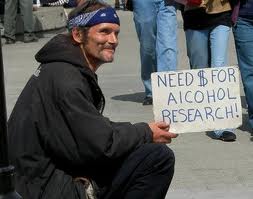 Liquor cost is the most common metric bars use to measure performance alongside total sales volume. Sales volume is fundamental since it represents the total dollars your customers are spending at your business. Obviously the amount of money you actually take home as profit depends on the margin you make on your that revenue. In the bar business this measure is referred to as Liquor Cost. Accountants would call it “cost of goods sold” which makes sense given it measures how much money you spend buying product on average to generate a dollar in sales. A 20% cost of goods sold or liquor cost means you spend 20 cents on average buying liquor inventory in order to get a dollar in sales.
Liquor cost is the most common metric bars use to measure performance alongside total sales volume. Sales volume is fundamental since it represents the total dollars your customers are spending at your business. Obviously the amount of money you actually take home as profit depends on the margin you make on your that revenue. In the bar business this measure is referred to as Liquor Cost. Accountants would call it “cost of goods sold” which makes sense given it measures how much money you spend buying product on average to generate a dollar in sales. A 20% cost of goods sold or liquor cost means you spend 20 cents on average buying liquor inventory in order to get a dollar in sales.
Ever since I began writing my blog about liquor inventory, liquor cost and all things related to bar profits, I’ve argued that the bar industry’s reliance on liquor cost costs most bars thousands of dollars each year. The reasons the industry losses so much money through using liquor cost is that liquor cost is a poor performance measure. It can hide a multitude of evils, even from seasoned managers and owners. The reason liquor cost is (over) used so much is that it is simple to calculate. All you need to know is the value of the liquor inventory you used at cost and divide it by the sales you generated from sales. You pull total sales from your POS, and figure out the value of the inventory used. The value of inventory you used is simply what you spent over the period buying product plus the amount the value of inventory on hand fell by (if inventory on hand went up, you minus the difference).
Simplicity may be the reason so many bars rely on liquor cost but it’s also the problem with the measure. Since many factors are affecting your liquor cost simultaneously, it’s impossible to gain a detailed understanding of those factors from looking at liquor cost alone. An often overlooked factor which is diminishing profits of most bars in the US is liquor inventory shrinkage. That’s the technical name used to describe when you use up your liquor inventory without turning that usage into profits. Overpouring, undercharging, mistakes and theft all contribute to shrinkage but the scale of the problem at most bars is amazing. When you look at hard numbers from the industry it turns out that the average bar looses something in the region of 20% of the product they use to shrinkage. Liquor cost is damaging because it doesn’t allow you to measure the shrinkage level at your bar and when you can’t measure your shrinkage you can’t manage it either.
It’s worth me quickly mentioning here that I’d like to draw a clear distinction between liquor inventory shrinkage and comping drinks for your customers. The first term refers to unplanned loss while robs your profits while the second refers to giving away drinks to customers as a form of marketing. It’s no secret that customers like getting something for nothing and in the bar business, when used effectively, this tactic can be a useful addition to your quiver of promotional activities.
If you own or manage a bar and want to figure out how much liquor inventory shrinkage is costing your bar, do some research and choose one of the many bar inventory systems which are designed exactly for this purpose. In the meantime if you want to use a smarter tool to calculate liquor cost for you whole bar or for a specific drink, you should request our free liquor cost formula tool.
Related posts

